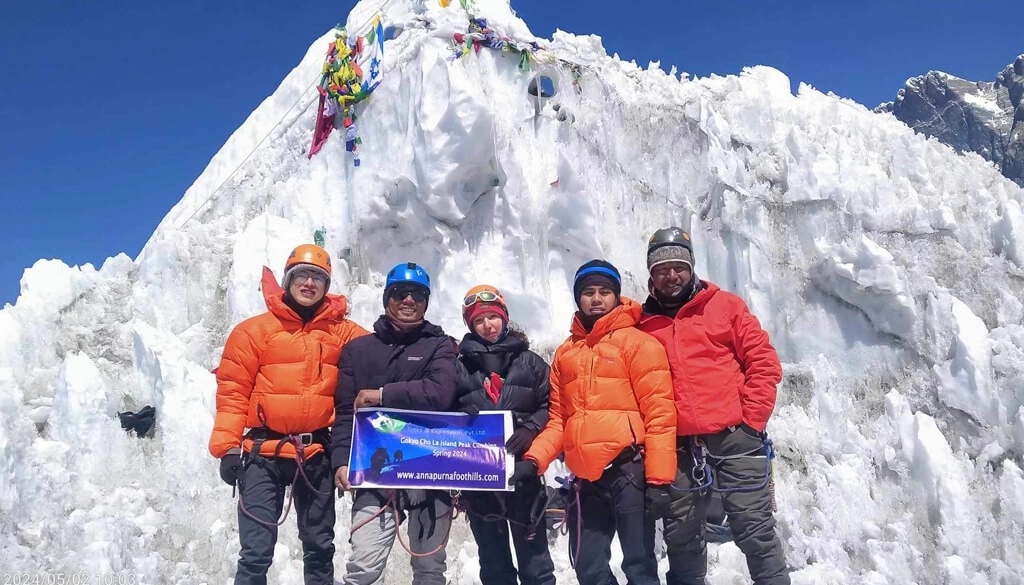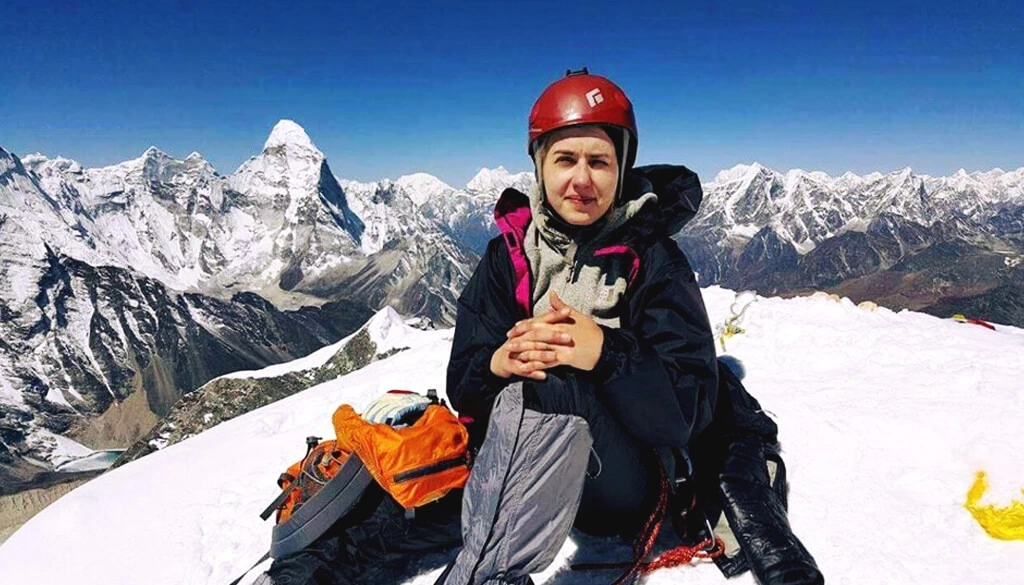About Island Peak Climbing
About Island Peak Climbing
Island Peak (Imja Tse), 6189m, is an exciting and challenging climb in the Khumbu Himalaya and, therefore, within reach of the average fit person who wants to have a genuine high-altitude climbing experience on snow and ice. Previous climbing experience will be helpful as our highly experienced Sherpa climbing guides will also provide training and practice of relevant skills such as using jumour, abseiling, and mainly crossing the ladders section on Island Peak. If you have previous knowledge and experience in Rock and ice climbing and have already done high-altitude trekking, it will be very beneficial for your Island Peak Expedition. Our Island Peak Climbing combines the classic trek to the Everest Base Camp and a stunning 6000m peak climb. Island Peak Base Camp is easily accessible from Chhukung village, just off the Everest Base Camp trail. The climb segment starts from the Chhukung Valley and takes only 2 Nights and 3 Days to climb the Imja Tse, Island Peak.
Kathmandu to Island Peak Climbing Route
Island Peak Climbing begins at Lukla and follows the Everest Base Camp Trekking Trail up the Dudh Kosi valley through Namche Bazaar, Tengboche, Dingboche, Gorak Shep, Everest Base Camp and Kala Pattar. This trekking journey to Everest Base Camp is already an extraordinary experience; there are beautiful pine and rhododendron forests, monasteries, excellent trekking trails, and magnificent views of Khumbu Himalaya such as Everest, Ama Dablam, Nuptse, and Pumori, to name a few and of course the heart and soul of Khumbu, i.e. Sherpa people, their culture, work and hospitality. By now, we will be much more acclimatized to the cold weather and altitude on Island Peak. Returning to Dingboche, the trail branches off into the Chhukung Valley, where our next adventure begins.
From Chhukung village, the trail follows the moraine of the massive Lhotse Glacier, then the Imja Tso Khola (river) to Island Peak Base Camp at 5100 m. We spend time hiking around base camp for acclimatization and learning the climbing skills required for Island Peak. There are slabs and boulders to clamber over to reach Island Peak High Camp (5500m) where we will spend our second night at tents before we approach our summit push of Island Peak.
Island Peak Summit Day
After high camp, there are more rocks and scree at first, and then we get to Crampon Point, where we put on our harness, climbing boots and other climbing gear. We need to walk on the Ladders to cross the Crevasses section in a couple of places. After the Crevasses section, walk on the flat glacier section before we get to the foothill of the Ice headwall. A 300-meter headwall of 45-degree snow slopes leads to the exposed summit ridge of Island Peak. From the summit, the incredible view of the Himalayas includes Nuptse, 7879m; Lhotse, 8501m; Lhotse Middle Peak, 8419m; and the unclimbed Lhotse Shar, 8383m. To the east, the perfect pyramid of Makalu, 8475m and the frozen waves of the Lhotse Shar Glacier, and to the south, Baruntse and alluring Ama Dablam.
The best seasons for Island Peak Climbing
The best season for climbing Island Peak in Nepal is from March to May (Spring) and September to November (Autumn). However, the winter is also a great time to climb if you are well prepared for the cold weather. In the crisp and cold month of December, the views of the mountains are crystal clear, and there are fewer trekkers around. The duration of Island Peak Climbing can be lengthened or shortened according to your preference. Annapurna Foothills Treks and Expedition will arrange every detail of your Island Peak Expedition; lodge accommodation, guides, food, and all the necessary climbing and camping equipment.
Planning to climb Island Peak (Imja Tse) in 2025 and 2026
Guaranteed Departures: We are preparing for our Autumn 2024 and 2025 dates and groups for Island Peak Expedition. Please get in touch for further details.

















